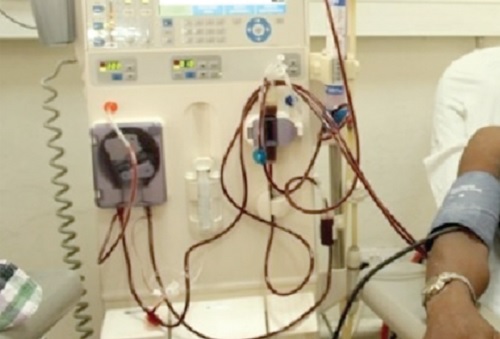
Funding kidney disease treatment (I)
Last month, news emerged that the Korle-Bu Teaching Hospital (KBTH) had increased, or was about to increase, the cost of a session of renal dialysis for kidney patients from GH¢380 to GH¢765.42.
Advertisement
The new amount is quite huge by any standards, and the jump is quite astronomical, which means fewer people will be able to access desperately needed treatment, without which they will die.
That is the stark reality.
Prevalence
By way of brief background, kidney failure is becoming quite a common global phenomenon, principally as a result of lifestyle issues.
This includes uncontrolled blood pressure, diabetes and consumption of alcohol, as well as all manner of aphrodisiacs.
The mercury levels found in galamsey activities here in Ghana and elsewhere also have a bearing on kidney complications.
In Ghana, the prevalence of chronic kidney disease (CKD) stands at 13.3 per cent, at 15.8 per cent in sub-Saharan Africa, and between 10 and 13 per cent globally.
As CKD progresses into kidney failure, dialysis treatment becomes essential as an artificial measure to treat patients and save lives.
The dialysis machine removes wastes and extra fluid from the human body and helps to maintain a healthy balance of water and salts in the blood.
Without the means to perform this crucial function, death occurs.
Grim dialysis landscape
Ideally, a kidney transplant following renal failure would be a more sustainable measure, but especially in our part of the world, organ donation is relatively uncharted waters.
Generally, people are quite queasy about signing up for their organs to be harvested in the event of their death through accidents, for instance, perhaps because it reminds them rather grimly of their mortality.
This means there are simply not enough kidneys available for transplants, which in turn means dialysis is the only realistically viable option to address renal failure here.
However, a cursory look at the data on dialysis centres and machines is anything but heart-warming.
Across the country’s 16 regions, there are about 50 dialysis treatment centres, out of which only about 40 are functional.
The remaining eleven have either been shut down or are yet to operate.
The majority of these centres are in the Greater Accra Region and Ashanti Region.
There are twice as many centres in the private sector as there are in the public sector.
As of June 2023, the total number of active machines for the country’s population of 32 million is under 400.
Outside the Greater Accra and Ashanti regions, the inequalities in regional distribution mean that even patients with the funds for treatment have challenges in accessing it.
Cost implications
To appreciate a discussion on the cost of dialysis treatment, it is perhaps useful to crunch some important baseline figures.
The cost of a dialysis machine, including freight to Ghana, customs duties and installation is in the region of $25,000.
Added to this is the $70,000 price tag of a medical grade reverse osmosis machine to support 20 dialysis machines for optimum performance, again including freight, customs duties and installation, among others.
Maintenance cost per machine per year ranges between $3,000 and $10,000 depending on the age of a dialysis machine.
The older the machine, the higher the maintenance costs.
Added to these are the cost of consumables for treating each patient during each session, such as a dialyzer, fistula needles, acid concentrates, bloodlines, bicart, micron particulate filters, ultra-filters, dialysis catheters, gloves, protective medical clothing for clinicians among others.
A supplier’s costs to the healthcare provider will average between GH¢620 and GH¢650 for consumables.
Import duties, exchange rates and inflation remain important drivers in the final cost analysis.
Technical support, electricity and water, staff compensation, and markups (in the case of private hospitals) also come into the equation.
Service providers usually buy their consumables in bulk for the subsequent 12 months in advance according to their projected needs to cushion themselves against exchange rate volatilities and inflation.
When you add all of these, the realistic cost of a session of treatment, in my estimation, comes to GH¢950, considerably higher than the GH¢765.42 that was being bandied about concerning KBTH.
This is above the head of the average Ghanaian patient.
We cannot just shrug and watch our fellow citizens die.
Something must give.
What then is the way forward for funding renal disease treatment, both in the short and long term, applicable to other diseases?
Are there lessons on preventive healthcare to learn?
Next week I will be sharing my thoughts.
Rodney Nkrumah-Boateng,
Head, Communications & Public Affairs Unit,
Ministry of Energy.
E-mail: [email protected]




